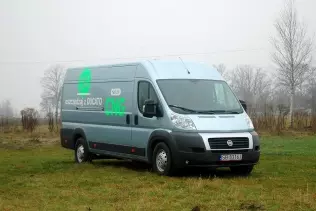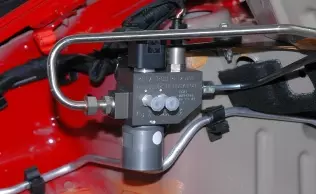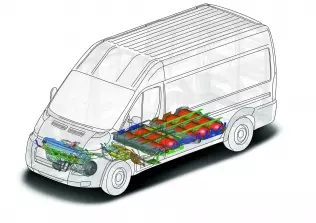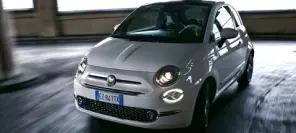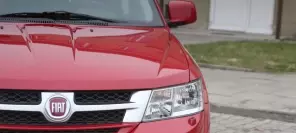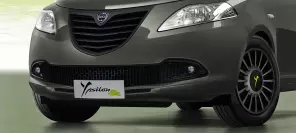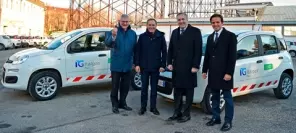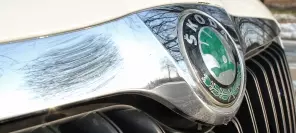- Main page
- Search
- Up to date
- Products
- Technology
- Vehicles
- Video
- Conversion Payback Simulator
Port Injection - Conversion Payback Simulator
Direct Injection - Conversion Payback Simulator
Diesel - Newsletter
Fiat Ducato Natural Power - natural it is
- Home page
- Up to date
- Reportages, interviews, road tests
- Road tests
- Fiat Ducato Natural Power - natural it is
« Powrót
 loading results...
loading results...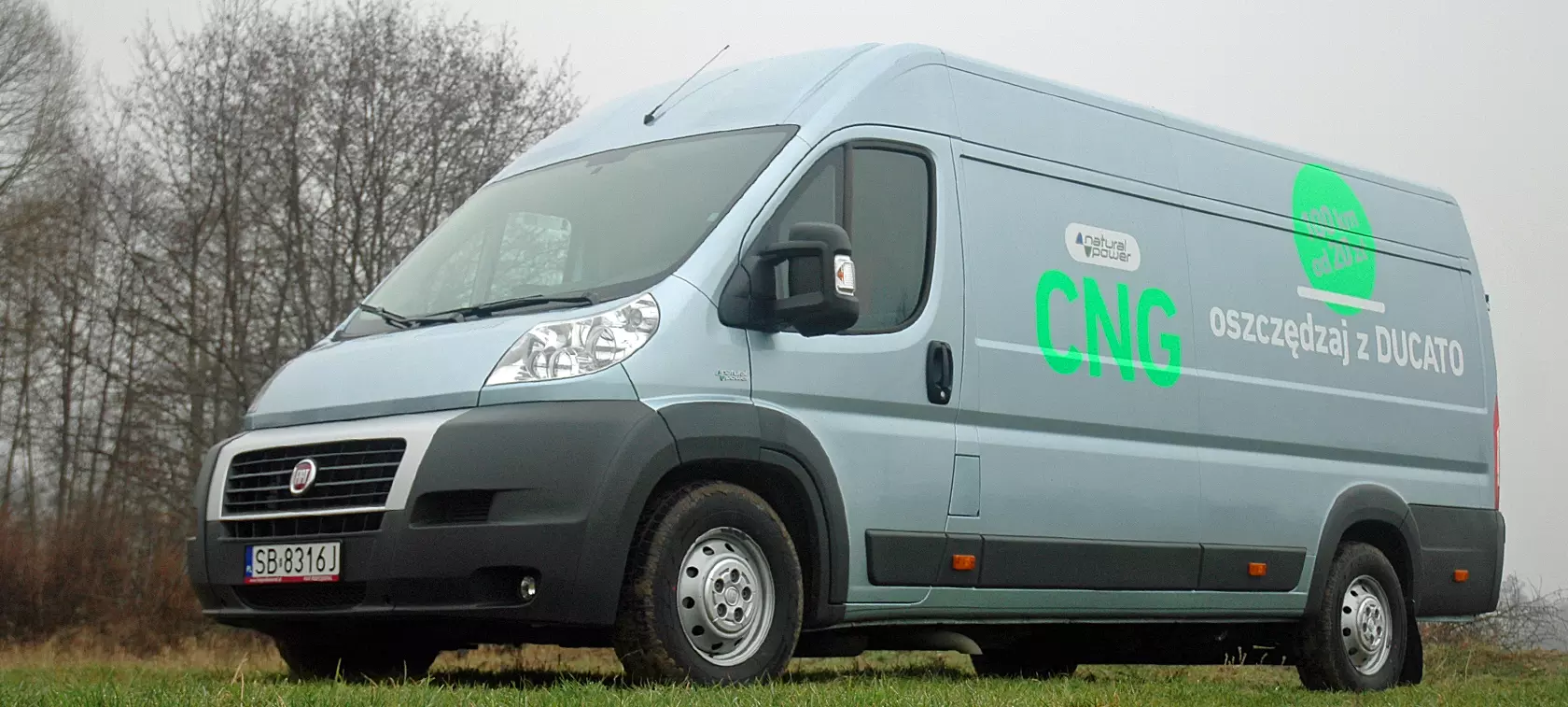 © gazeo.com
© gazeo.com 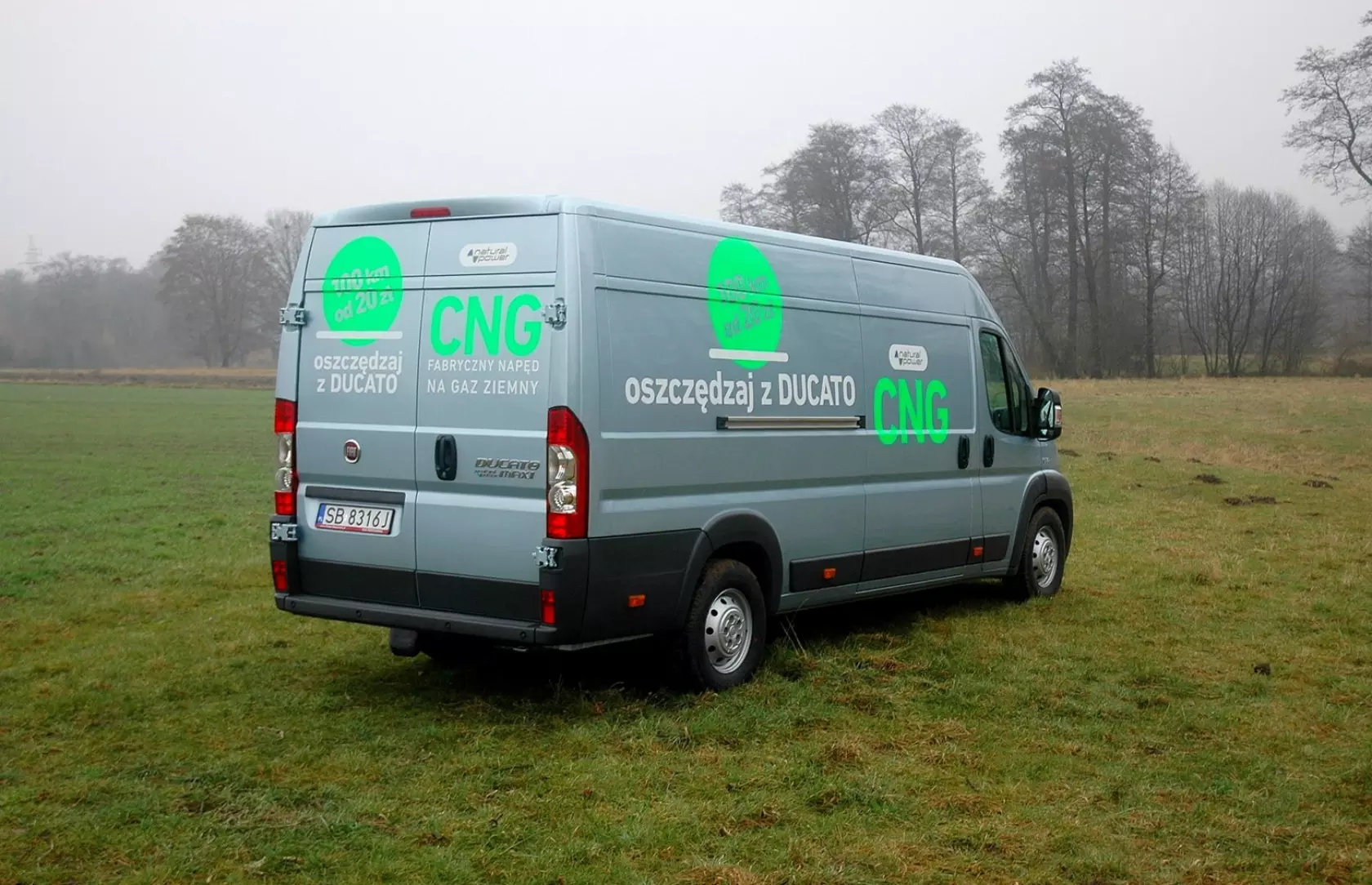 The longest version of the Fiat Ducato Natural Power. Bigger load capacity could only be achieved by ordering a higher roof version (H3)
The longest version of the Fiat Ducato Natural Power. Bigger load capacity could only be achieved by ordering a higher roof version (H3) 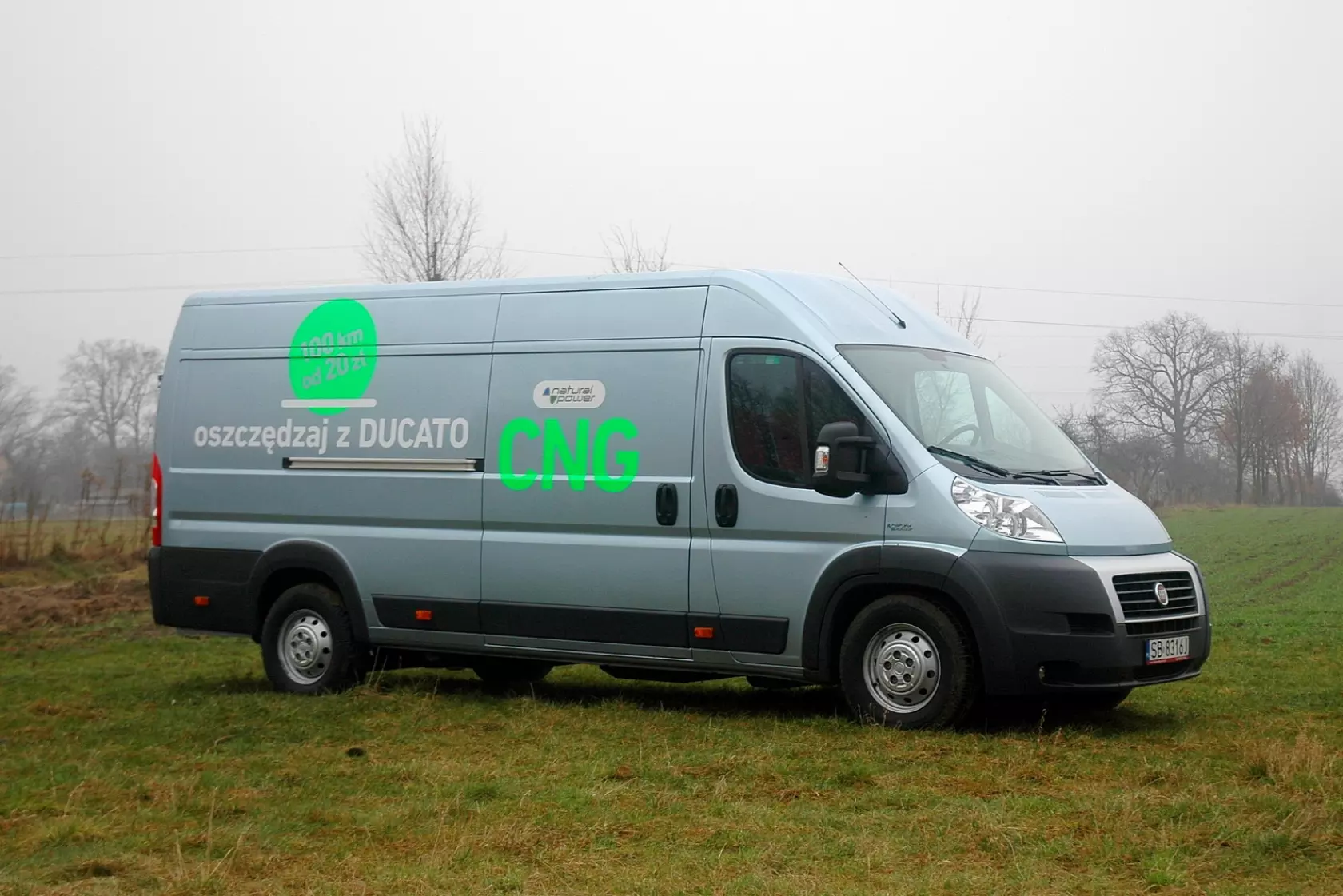 Note the steel gas tank covers visible under the car
Note the steel gas tank covers visible under the car 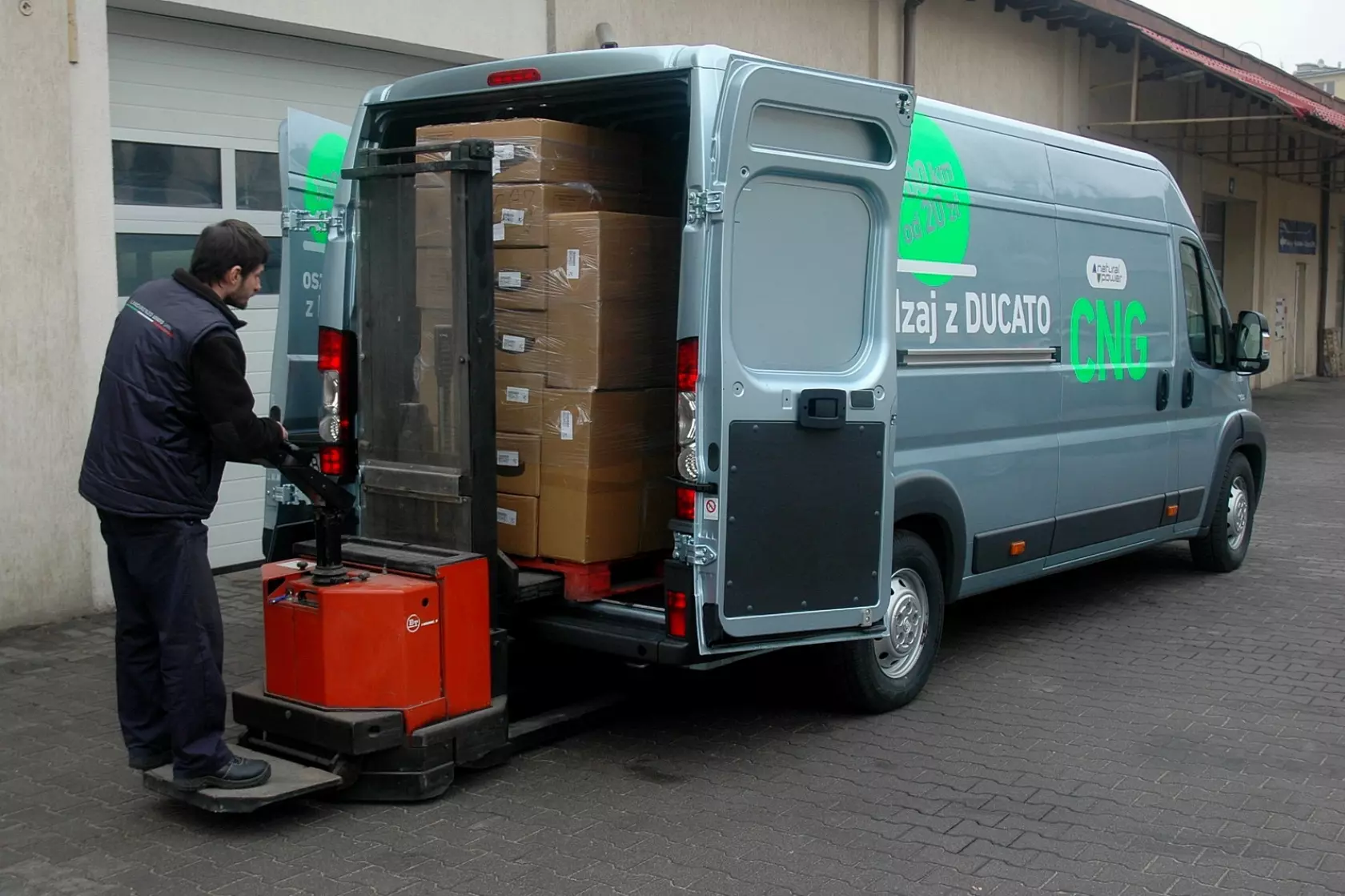 Loading the Fiat Ducato Natural Power
Loading the Fiat Ducato Natural Power 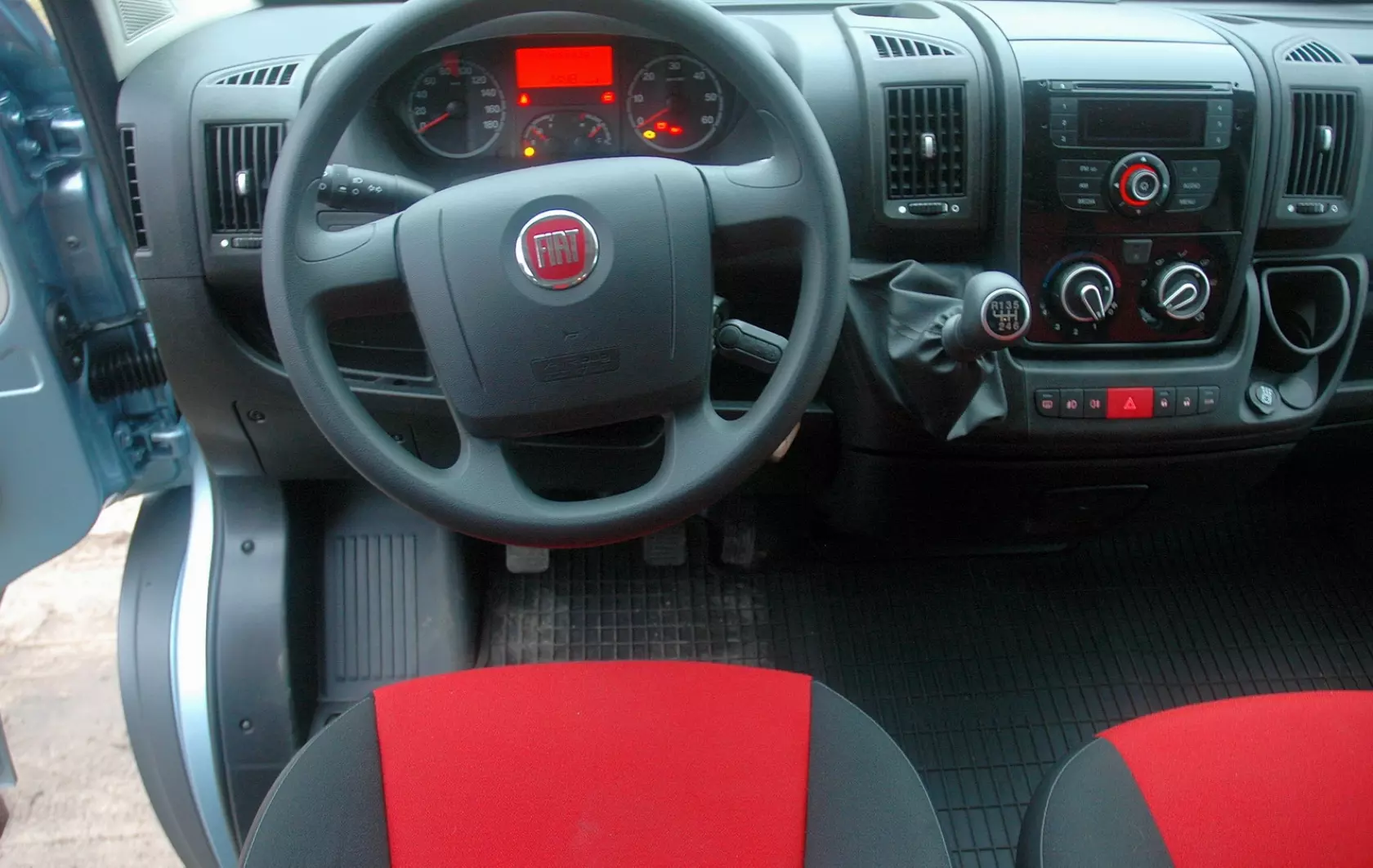 We won’t find the gas system switch on Ducato Natural Power’s instrument panel. For most of the time the car runs exclusively on natural gas and switching to petrol (after you’ve run out of gas) is determined by an electronic control unit
We won’t find the gas system switch on Ducato Natural Power’s instrument panel. For most of the time the car runs exclusively on natural gas and switching to petrol (after you’ve run out of gas) is determined by an electronic control unit 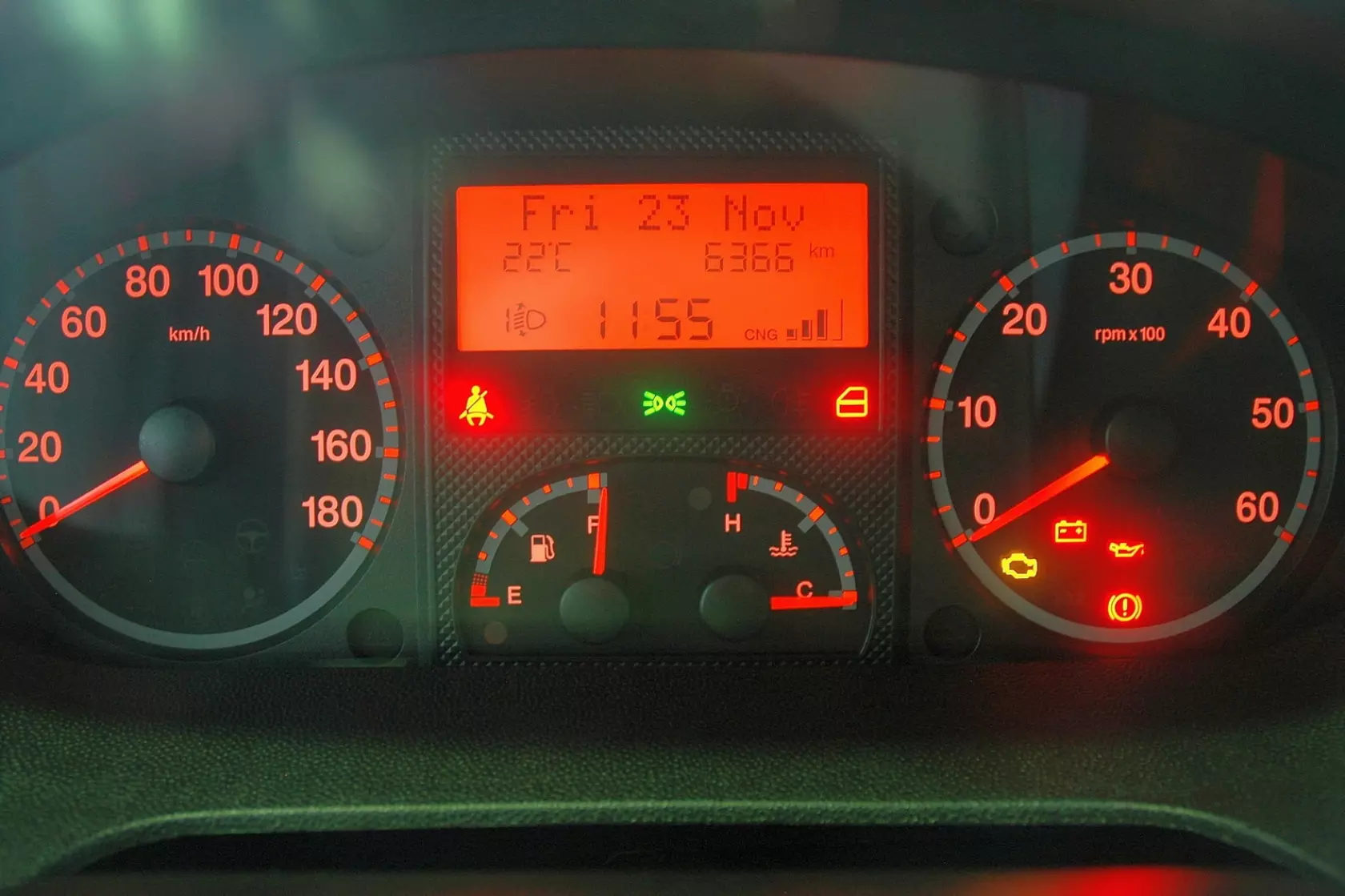 The natural gas level indicator is visible in the center of the instrument panel
The natural gas level indicator is visible in the center of the instrument panel 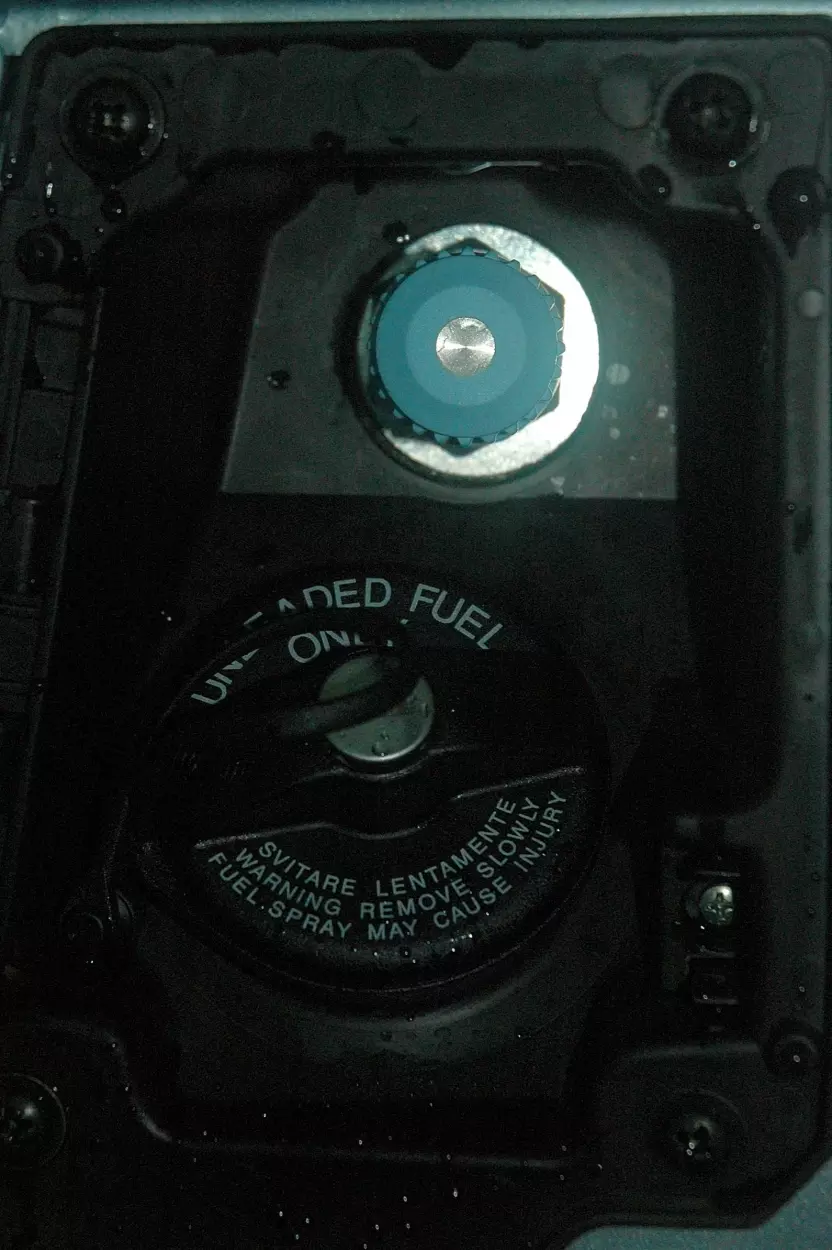 The CNG filling valve is located very high in the cavity underneath the fuel filler cap, occasionally causing trouble with inserting the fueling nozzle
The CNG filling valve is located very high in the cavity underneath the fuel filler cap, occasionally causing trouble with inserting the fueling nozzle  CNG refueling
CNG refueling 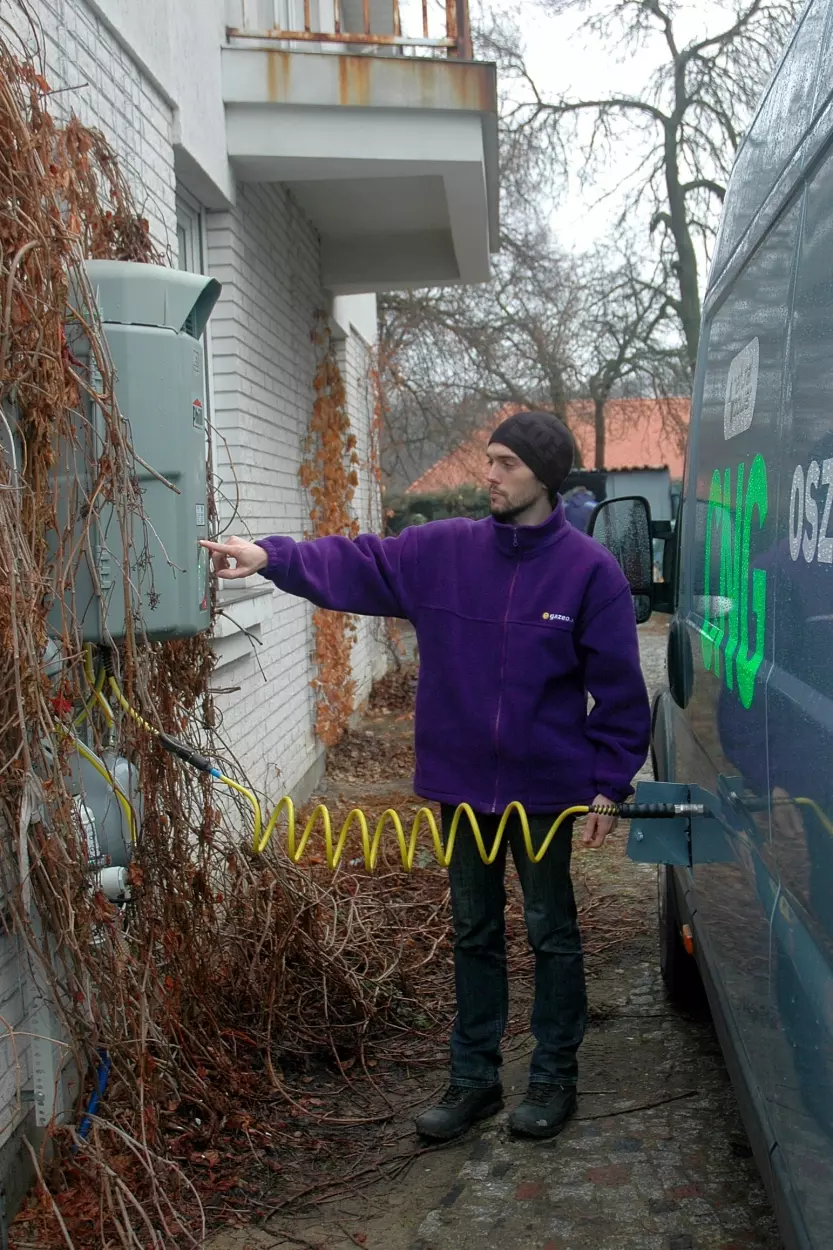 The use of your own compressor is a good idea when there are no CNG stations around
The use of your own compressor is a good idea when there are no CNG stations around 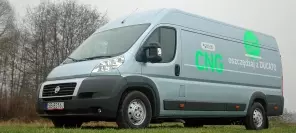








The range offered on the Ducato vans includes 8 different cargo capacities (8-17 m3). According to the manufacturer, taking into account different combinations of the car’s bodies, engines and wheelbases, you can choose from about 2000 body styles for the transport of goods or people or for building custom vehicles to serve various purposes.
The Natural Power model is offered as a van, glazed or partially glazed, in 22 different versions, including two different wheelbases (L3 – 3450 mm and L4 – 4035 mm). The latter one is available also in an even longer version (extended rear overhang). One can also choose between two versions of different body height (high roof – H2 – or super high – H3) and two versions of total weight limit – 3,5 and 4 tons.
The new Fiat Ducato Natural Power has been available among other Fiat Professional vehicles since May 2011. Since that time, the vehicle’s powertrain uses the same engine that has been successfully used by Iveco in their gas-powered Daily model.
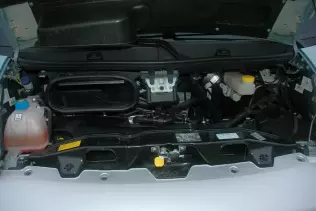 © gazeo.comThe engine bay in the Ducato Natural Power. The Meta ND1 gas pressure regulator is behind the brake master cylinder
© gazeo.comThe engine bay in the Ducato Natural Power. The Meta ND1 gas pressure regulator is behind the brake master cylinderThe test vehicle was an L4H2 van with a 4035 mm wheelbase, extended rear overhang and high roof that provided 15 m3 of cargo space. The car in the Natural Power version, however, is heavier (by almost 400 kg) than comparable diesel models and weighs 2520 kg.
Drivetrain
The Ducato is equipped with a 4-cylinder, turbocharged power unit with an engine displacement of 2999 cm3 and main dimensions of 95,8 and 104 mm (bore and stroke). The valvetrain includes 4 valves in each cylinder. They are driven by two camshafts mounted on the head.
The engine – while powered by gas – has an output of 100 kW (136 PS) in the range of 2750-3500 rpm, and a maximum torque of 350 Nm available above 1500 rpm. Such parameters allow for a top speed of 159 km/h and acceleration to 100 km/h in 13,9 s.
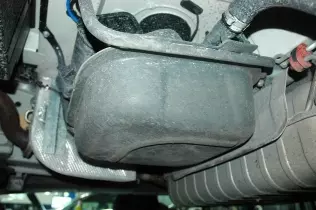 © gazeo.comA small petrol tank is located at the front of the vehicle, in front of the exhaust muffler
© gazeo.comA small petrol tank is located at the front of the vehicle, in front of the exhaust mufflerThe drive unit is approved for one type of fuel (natural gas). The petrol fuel system is treated as back-up, allowing you to drive to a CNG station when you run out of natural gas. The petrol tank is therefore small (14,5 l – reserve indication diode switches on at 8 l). It is enough to drive up to 100 km. Power on petrol is limited to 100 hp and top speed to 90 km/h.
The engine is mated with a 6-speed transmission which provides high flexibility of the power transmission system, typical for self-ignition engines. With the sixth gear used properly, it guarantees relatively low engine rpm at “cruising” speed. At around 100 km/h (6th gear), the engine runs at 2000 rpm. The gas-powered Ducato accelerates from 60 to 100 km/h in 10,1 seconds and gearing used in the power transmission system allows for driving up a 21,5% slope.
These parameters of the drivetrain are confirmed in practice, especially while driving in the city, for which this car was created. After gathering speed, the driver won’t have to use the gear lever too often.
Gas system
As in any other Fiat in the Natural Power range, Ducato has a sequential gas injection system manufactured by Metatron.
A single-stage Meta ND1 piston type regulator is responsible for pressure reduction. The pressure is reduced in a cylindrical chamber. The chamber’s volume is controlled by a movable piston. The pressure is reduced from 20 to around 0,6-0,9 MPa. Gas fuel under such pressure goes to the common rail, and then – through sequential injectors – to the inlet ports of each cylinder.
All the time – including start-up and warm-up phase – the engine runs on natural gas. The driver couldn’t switch to petrol even if he wanted to. This is controlled by the gas system's control unit that tracks the level of CNG in the cylinders (the pressure goes down when CNG is being used) and switches to petrol only when you run out of CNG. The driver is informed of this fact by a lighted petrol pump icon on the instrument panel. Previously to that, information about low level of CNG left (gas level indicator blinks) is repeated twice – the first time when 4/5 of CNG were consumed. The second warning precedes switching the engine to petrol supply.
Good to know
During our test drives the first warning about low level of gas appeared after driving for 304 km.
The gas system was flawless. The fact that you can’t manually switch to petrol seemed a bit strange in the beginning. But this strategy of working on natural gas whenever it’s possible was implemented to reduce emissions of harmful compounds in the exhaust gasses. Each time the engine switches to petrol, it increases its emissions level, therefore it runs on natural gas only, unless it is necessary to switch to petrol when we run out of CNG. Initially, it may be a bit surprising, but thanks to this, the car retains its pro-nature character and operating costs are reduced to minimum, which is surely beneficial both for the environment and the owner.
Gas tank
Gas fuel in the Ducato Natural Power is stored in five tanks located under the floor of the cargo space. They have a total volume of 220 l (2 cylinders 50 l each – which gives us 8,5 kg of CNG each, and 3 cylinders 40 l each – 6,8 kg of CNG each), which means we can have as much as 49 m3(37,4 kg) of CNG compressed to 20 MPa.
According to the rules, each of the five tanks has to be equipped with a combined valve that includes: an overpressure valve that operates when the pressure reaches 33 MPa, a fire valve (fuse valve) that opens when the tank’s temperature reaches 110° C, an excess flow valve located in the part of the combined valve that is screwed in the tank, therefore it often works even if the outer part of the valve is damaged (e.g. in a car crash), and operating valves – manual, control knob and solenoid, which opens automatically when the engine starts.
Gas tanks are very heavy (the CNG version of the car weighs 2520 kg). However, placing them under the floor of the cargo space does not affect driving (COG was well-thought). They also do not limit the functionality of the car’s body. The Natural Power’s cargo space is the same as in diesel versions of the Ducato.
Driving range
According to the manufacturer, such amount of methane allows for driving 400 km and we can confirm that. During our test drive, we were driving in mixed conditions, but mainly outside the city, and we were able to go for 380 km on gas.
Surely the car would be able to reach the driving range declared by the manufacturer if we were driving exclusively outside the city. Taking into account the manufacturer’s data on consumption of natural gas, the car is able to cover less than 300 km in the city.

You may also find these interesting:
 loading results...
loading results...
